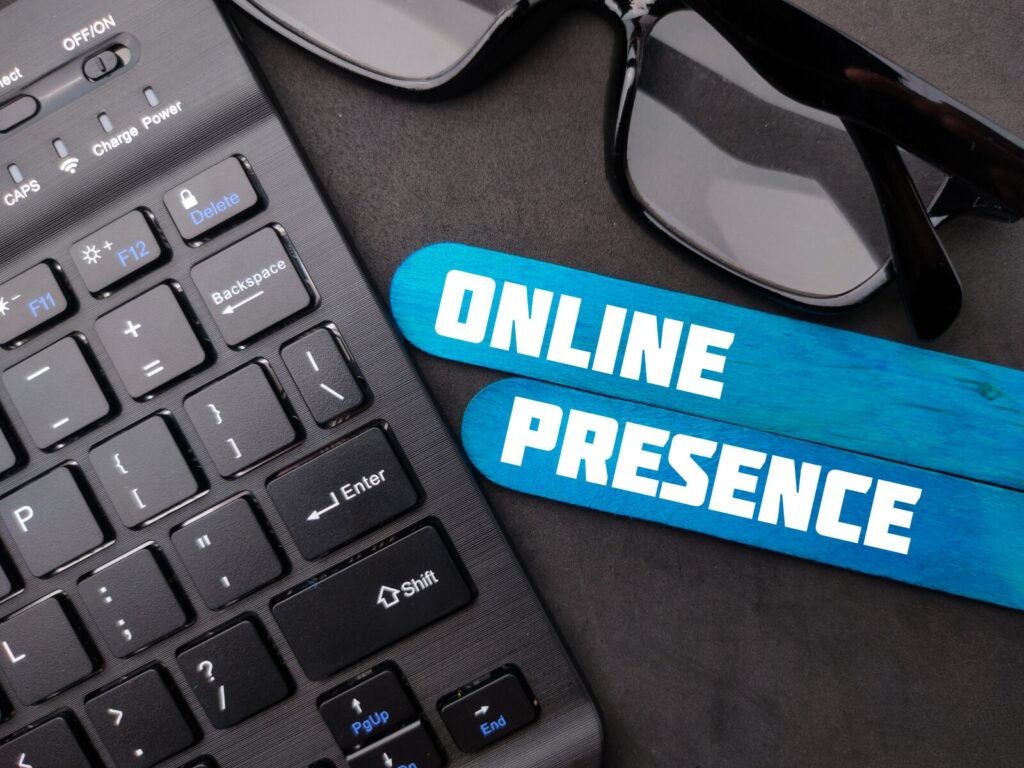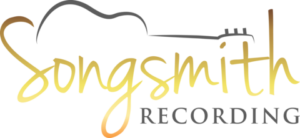
Let’s be honest, marketing your music is a big job, especially if you’re just starting out. The truth is, it isn’t easy to stand out, and the work it takes to stand out can be exhausting. That’s why we’re here to help you create your own Independent Musicians DIY Marketing Plan.
In this article, we’re going to walk you through the process of creating a marketing plan that will help you grow your fanbase, increase your income, and get your music in front of the people who want to hear it.
Now, we know what you’re thinking: “But I just want to focus on making music! I don’t want to “Market” anything!” We hear you, and trust us, we know! While, the reality of getting down to the nitty gritty is a heavy lift, it is necessary none the less. In order to make the most of your effort, we’re going to show you how to create a plan that’s tailored to your strengths, and that fits into your busy schedule.
So, whether you’re a singer-songwriter, a band, a rapper, or anything in between, we’ve got you covered. We’ll walk you through the process of setting specific and measurable goals, identifying your target audience, developing your brand, building a strong online presence, and leveraging paid advertising, collaborations, and streaming platforms.
By the end of this article, you’ll have a clear roadmap for the next six months that will help you make the most of your time, energy, and resources, and get your music out into the world where it belongs. So let’s get started!
Defining your goals
As an independent DIY musician, you wear many hats – songwriter, performer, marketer, and more. While the creative side of music is undoubtedly the most enjoyable, it’s the business side that ensures that you can continue to do what you love for years to come. If you need a deep dive into the financial realities for an independent musician, this article will help. Check it out!
One of the most crucial aspects of your music business is your marketing plan. Without a plan, your music may never reach its full potential, and you may miss out on opportunities to grow your fanbase and generate income.
That’s why we’re going to take a closer look at crafting a marketing plan for DIY musicians, in six month segments.
The first step starts with defining your goals.
Setting specific goals is the cornerstone of any successful marketing plan. Without clear goals, you’ll have no way of knowing whether your marketing efforts are paying off. Plus, having specific goals gives you something to work towards and helps you stay focused.
So, what are some examples of goals for DIY musicians? Here are a few to get you started:
- Growing your fanbase
This is a common goal for many musicians, and for a good reason. A larger fanbase means more people to sell your music to, more merchandise sales, and more opportunities to perform.
- Increasing your income
As a DIY musician, you rely on your music to pay the bills. Setting a goal to increase your income can help you stay motivated and make smarter business decisions.
- Improving your live show
Your live show is your chance to connect with fans and leave a lasting impression. Setting a goal to improve your live performance can help you stand out from the crowd and win over new fans.
So, setting goals is a crucial step in creating a marketing plan that will help you achieve success as a DIY musician. But how do you go about setting goals that are realistic and measurable?
Define your goals clearly, such as “increase my monthly Spotify listeners by 20%”.
Make sure that the goals are measurable.
For example, instead of setting a vague goal like “increase my income”, try being specific by determining a measurable target like “earn $500 more per month from merchandise sales by the end of the year”.
This goal is defined, and measurable.
The goals you set should be relatable to the what you need to accomplish, and they should held to a time frame in order to best track progress and make adjustments along the way.
By setting clear and realistic goals, you can create a musicians marketing plan that is tailored to your unique needs and goals as a DIY musician. Don’t be afraid to revise and adjust your goals as needed, and celebrate your achievements along the way. With a solid set of goals in place, you’ll be one step closer to achieving your dreams in the music industry.
You may also consider developing Music NFTs as a goal. Doing so could also be a means to contribute your effort toward increasing income. We have an article all about that specifically. If you are interested; Here is the link. Check it out!
Identifying Your Target Audience

Now that you’ve set some awesome goals for your marketing plan, it’s time to figure out who you’re marketing to. In other words, who is your target audience?
Knowing your target audience is crucial to the success of your marketing plan. You want to make sure you’re reaching the people who are most likely to become your fans and support your music. So, let’s talk about how to identify your target audience.
- Take a look at your current fanbase.
Who are your fans? What are their demographics, such as age, gender, and location? What are their interests and behaviors? This information can give you a good idea of who your target audience is.
- Research your musical genre.
Who are the typical fans of your genre? What are their interests and behaviors? This can also give you valuable insight into your target audience.
- Tailor your plan.
Tailor your musicians marketing plan to the interests and behaviors of your target audience. For example, if your target audience is mostly young adults who are active on social media, you’ll want to focus on platforms like Instagram and TikTok. If your target audience is mostly middle-aged music lovers, you may want to focus on more traditional marketing methods like radio ads or email newsletters.
Ultimately, the key to being successfully is marketing to the interests and behaviors of your target market as specificly as possible. The more you know about your them, the more effective your marketing efforts will be.
Developing Your Brand
Developing your brand is essential for any marketing plan for DIY musicians, as it helps you establish a unique identity and connect with your fans on a deeper level. Your brand should represent your music, your personality, and what you stand for as an artist.
So, how do you go about creating a brand that truly represents you?
Here are some tips:
- Define your brand identity
Start by figuring out what you want your brand to represent.
- What makes your music unique?
- What values do you stand for?
- What kind of emotions do you want to evoke in your fans?
Once you have a clear idea of your brand identity, start building your brand around that.
- Create a memorable logo
Your logo is the visual representation of your brand, so it’s important to create something that stands out and is easily recognizable. You can hire a professional designer or use online tools to create a logo that reflects your brand identity.
- Establish a consistent visual style
Consistency is key when it comes to branding. Use a consistent color palette, font, and visual style across all your marketing materials, from your website to your social media profiles. This will help create a cohesive and memorable brand.
- Align your brand with your musical genre
Your brand should reflect the type of music you create. If you’re a folk musician, for example, your brand should have a more organic and earthy feel. If you’re an EDM artist, your brand might be more modern and high-energy. Make sure your brand aligns with your genre and musical style.
- Tailor your brand to your target audience
Make sure your brand resonates with your target audience. If your target audience is younger, you might want to create a more edgy or trendy brand. If your target audience is older, you might want to create a more classic or timeless brand. Understanding your audience is key to creating a brand that connects with them.
Budget Friendly Branding
Doing everything you need to do in order to make your effort a success can start to add up in cost. There are some methods to promote your brand in a way that more effectively manages the money you do have to allot for that. For a deeper dive on Budget Friendly Branding, Here is our guide to help!
By following these tips, you’ll be well on your way to developing a strong brand that represents you as a DIY musician. Remember, your brand is more than just a logo – it’s the essence of who you are as an artist, and it’s what sets you apart from the rest. So, take the time to develop a brand that truly represents you, and watch as your fanbase grows and your music career takes off!
Building a brand requires an informed and exact effort. We detail the process at greater length in a recently posted article. While we have given you a reasonable starting point here you can build upon this knowledge by bookmarking our Building A Brand article as a resource for later. Here is the link!
Actionable Steps
Here are ten actionable steps that could be implemented and measured over a 6-month period for Developing you brand as a DIY musician:
- Conduct a brand identity survey to gather feedback from your existing fan base on what they think your music represents.
- Develop a brand mission statement that clearly articulates your brand identity and purpose.
- Research and hire a professional designer to create a visually appealing and memorable logo.
- Create a branding style guide that outlines the consistent color palette, font, and visual style to be used across all marketing materials.
- Update all marketing materials including website, social media profiles, and merchandise with the new branding.
- Conduct a competitive analysis to ensure that your brand is distinct from your competitors in your genre.
- Develop a comprehensive content strategy that aligns with your brand identity and resonates with your target audience.
- Create a launch plan to announce your new brand identity to your fan base and generate excitement.
- Implement a social media monitoring system to track and respond to any mentions or feedback about your brand online.
- Measure the success of your brand development efforts by tracking metrics such as website traffic, social media engagement, and merchandise sales.
Building a Strong Online Presence

In today’s world, having a strong online presence is critical for any DIY musician. Why? Because it’s where your fans are! In this section, we’ll discuss why building a strong online presence is important for a musicians marketing plan, offer tips for building one, and explain how to engage with your fans and promote your music online.
Firstly, having a strong online presence as a DIY musician is important because it helps you reach and connect with a wider audience. The internet is a global stage, and social media platforms such as Facebook, Instagram, and Twitter allow you to connect with people from all over the world who share a love for your genre of music. Your website is also an essential tool that allows you to promote your music, announce upcoming shows, and sell merchandise.
Three Points
- Create a Website
To build a strong online presence, start by creating a website that showcases your brand and your music. You can use platforms like Squarespace or WordPress to create a professional-looking website that reflects your unique style. Be sure to include information about your music, upcoming shows, and merchandise. Don’t forget to make it easy for fans to sign up for your email list! If you are interested in knowing more about the easiest way to get your email list growing right now; we have a great guide hat explains how. Check it out!
- Connect with Social Media
Social media is another important tool for building a strong online presence. You can use platforms like Youtube Facebook, Twitter, and Instagram to connect with your fans and promote your music. When using social media, it’s important to be authentic and engage with your audience. Share updates about your music, post behind-the-scenes photos and videos, and interact with your fans by responding to their comments and messages.
If you want to maximize your Youtube presence; Our guide for doing just that will be a big help. Read and bookmark!
- Engage with Fans
Engaging with your fans is crucial for building a strong online presence. It’s important to respond to comments and messages, share updates about your music, and be active on social media. You can also use email marketing to keep your fans up-to-date with your latest music, merchandise, and shows. When promoting your music online, be sure to offer value to your fans. Share exclusive content, offer early access to new music, or host online events like live streams or Q&A sessions.
In conclusion, building a strong online presence is essential for any marketing plan for DIY musicians. By creating a website, using social media, and engaging with your fans, you can reach a wider audience and promote your music effectively. Remember to be authentic, offer value to your fans, and have fun!
Actionable Steps
Here are ten actionable musicians marketing plan steps, that could be implemented and measured over a 6-month period for Building a strong online presence as a DIY musician:
- Increase website traffic by 25% through SEO optimization and regular blog posts.
- Grow email list by 500 subscribers by offering exclusive content and promotions to fans who sign up.
- Increase social media following by 20% by consistently posting engaging content and interacting with fans.
- Collaborate with at least 3 other DIY musicians to cross-promote each other’s music on social media and websites.
- Create a monthly video series featuring behind-the-scenes content, performances, and Q&A sessions with fans.
- Host a virtual concert or live stream for fans, promoting it through email and social media.
- Launch a merchandise line and promote it through social media, email marketing, and website updates.
- Improve website load time by optimizing images and removing unnecessary plugins.
- Attend at least 3 virtual industry events and engage with other DIY musicians and industry professionals on social media.
- Measure website analytics and social media engagement regularly to track progress towards goals and adjust strategies as needed.
Leveraging Paid Advertising
By investing in targeted ads on social media platforms, you can reach a larger audience and potentially grow your fanbase.
One benefit of using paid advertising is the ability to target specific demographics and interests. For example, if you play indie rock, you can target fans of similar artists or people who have expressed an interest in that genre. This allows you to reach people who are most likely to be interested in your music, rather than wasting your advertising budget on a broad audience that may not be interested.
- Identify Target Audience
To get started with targeted ads on social media platforms, start by identifying your target audience. Who are your current fans, and what demographics and interests do they have? Use this information to create targeted ads that will appeal to this audience. You can also use tools like Facebook’s Audience Insights to get more detailed information on your target audience.
- Catch Attention
When creating your ads, make sure to use eye-catching visuals and concise, compelling copy. You want to grab the viewer’s attention and entice them to listen to your music or check out your website.
- Use Analytics
Once your ads are live, it’s important to track their effectiveness and make adjustments as needed. Use the analytics provided by the social media platform to monitor how many people are clicking on your ads, visiting your website, and ultimately becoming fans. If your ads aren’t performing as well as you’d like, try adjusting the targeting or changing up the visuals and copy.
Advertise across the internet
In addition to social media ads, consider investing in other forms of online advertising, such as Google AdWords or banner ads on music websites. Again, make sure to target your audience and create compelling visuals and copy.
Remember, paid advertising should be just one part of your overall marketing plan as a DIY musician. Combine it with organic social media posts, email marketing, and live shows to create a well-rounded strategy for growing your fanbase and promoting your music.
Actionable Steps
Here are ten musicians marketing plan goals that could be implemented and measured over a 6-month period for Leveraging paid advertising as a DIY musician:
- Increase website traffic by 25% through targeted social media advertising.
- Grow email list by 15% through Facebook lead ads.
- Increase the number of Spotify monthly listeners by 50% through promoted posts on Instagram.
- Increase YouTube subscribers by 20% through promoted videos on Facebook.
- Drive ticket sales for a specific show by 30% through geo-targeted ads on Instagram and Facebook.
- Increase engagement on social media posts by 10% through boosting posts on Facebook and Instagram.
- Increase merchandise sales by 15% through targeted Facebook ads.
- Promote a new single to a targeted audience and achieve 10,000 streams on Spotify within the first month.
- Increase the number of followers on TikTok by 500 through promoted posts on Instagram and Facebook.
- Increase website conversions by 20% through retargeted ads on Facebook and Google AdWords.
Collaborating With Others

Collaborating with others is an essential to any marketing plan for musicians, as it can be a great tool for growing your fanbase. Collaborations can help you to gain credibility, and create memorable experiences for your audience. Collaborating with others can bring many benefits. These benefits can include working with other musicians, bloggers, or influencers in your genre and the exposure that comes from each.
One of the biggest benefits of collaborating with others is the opportunity to expand your reach. By working with other musicians or bloggers, you can expose your music to their fanbase and gain new followers. Collaborating with influencers in your genre can also be beneficial. They have a dedicated following who trust their opinions and recommendations.
When collaborating with others, it’s important to leverage the partnership to gain credibility and grow your fanbase. Share the collaboration on your social media channels, website, and email newsletter, and encourage your collaborators to do the same. By working together, you can create a buzz around your music. With that, you can build a loyal fanbase that is excited to see what you’ll do next.
Actionable Steps
Here are ten musicians marketing plan goals that could be implemented and measured over a 6-month period for Collaborating with others as a DIY musician:
- Research and identify 5 potential collaboration partners within your genre in the next month.
- Reach out to at least 3 potential collaboration partners via email or social media within the next two weeks.
- Attend 2 local music events within the next month to network and meet other musicians in your genre.
- Create a list of 5 potential bloggers or influencers in your genre and follow them on social media in the next week.
- Offer to collaborate with a fellow musician or blogger within the next two months.
- Create a clear plan and timeline for your collaboration, including goals, responsibilities, and deadlines, within the next three weeks.
- Share your collaboration on your social media channels, website, and email newsletter within 24 hours of its completion.
- Create a post-collaboration survey to get feedback from your audience and improve your future collaborations within the next week.
- Attend at least 1 online music community event within the next month to connect with other musicians and industry professionals.
- Follow up with your collaboration partners after the project is completed to thank them and maintain the relationship for future opportunities within the next week.
Utilizing Streaming Platforms
Streaming platforms like Spotify and Apple Music are essentials to any marketing plan for DIY musicians They are a great tool for artists looking to gain exposure and grow their fanbase. With millions of users worldwide, these platforms offer a huge potential for engaging an audience for your music.
For more about the Pros and Cons of using Spotify, we have a great article. Check it out!
To make the most of streaming platforms, it’s important to optimize your profile and promote your music effectively. This means creating eye-catching album artwork and bio, selecting the right genres and moods for your music, and using descriptive and engaging track titles and descriptions.
Collaborating with playlist curators is another great way to gain exposure on streaming platforms. Reach out to curators in your genre and ask if they’d be willing to add your music to their playlists. You can also use promotion tools like Spotify for Artists and Apple Music for Artists to reach new audiences and track your progress.
One of the best things about streaming platforms is that they offer a level playing field for independent musicians. With the right strategy, you can compete with major labels and gain a dedicated following of fans who love your music. So, take advantage of these platforms, optimize your profile, collaborate with playlist curators, and promote your music to the world!
Actionable Steps
Here are ten musicians marketing plan goals that could be implemented and measured over a 6-month period for Utilizing streaming platforms as a DIY musician:
- Increase monthly listeners on Spotify by 20% within the next 6 months by collaborating with at least 5 playlist curators in your genre and promoting your music through social media and email marketing.
- Increase the number of followers on Apple Music by 50% within the next year by using Apple Music for Artists’ promotion tools and optimizing your profile with high-quality images and engaging descriptions.
- Improve your artist ranking on Spotify by 10% within the next quarter by consistently releasing new music and promoting it through your social media channels and email newsletter.
- Increase the number of streams on your most popular song on Spotify by 30% within the next 3 months by collaborating with playlist curators and targeting your music to audiences interested in your genre.
- Reach 100,000 total streams on Spotify within the next year by releasing new music consistently, collaborating with playlist curators, and promoting your music through targeted ads on social media.
- Increase the number of monthly listeners on Spotify from a particular country by 50% within the next 6 months by targeting your music and promotion efforts to that specific region.
- Increase your number of playlist placements on Spotify by 20% within the next quarter by reaching out to at least 10 playlist curators and offering exclusive content or special promotions.
- Increase your visibility on Apple Music by 25% within the next year by regularly updating your profile, adding new content, and engaging with fans through the platform’s messaging feature.
- Improve your artist rating on Apple Music by 1 point within the next quarter by soliciting feedback from fans and addressing any concerns or criticisms they may have.
- Collaborate with at least 3 other artists in your genre on a playlist or joint album within the next year, with the goal of reaching new audiences and expanding your fanbase.
Reassessing Your Plan
As a musician, it’s important to be flexible and adapt to changes in the industry. That’s why it’s crucial to reassess your marketing plan regularly to make sure you’re on the right track and achieving your goals.
Here are some tips for tracking your progress and analyzing your data:
- Use social media analytics to track engagement and growth
- Monitor your website traffic and analyze which pages are most popular
- Keep track of your streaming numbers on platforms like Spotify and Apple Music
- Use Google Analytics to track your website’s search rankings and traffic sources
- Monitor your email marketing metrics, such as open and click-through rates
- Keep track of your merch sales and inventory
- Analyze your YouTube channel’s performance and engagement
- Monitor your online reviews and ratings
- Keep track of your live performance attendance and ticket sales
- Use surveys and polls to gather feedback from fans
Once you have analyzed your data, it’s time to adjust your plan and set new goals for the next 6 months. Some things you can do include:
- Adjust your target audience based on your findings
- Update your marketing messaging and branding
- Experiment with new platforms and channels
- Collaborate with other musicians and influencers in your genre
- Increase or decrease your advertising spend based on what’s working
- Try new types of content, such as videos or behind-the-scenes footage
- Create a content calendar and schedule posts in advance
- Launch a new product or service, such as a new album or merch line
- Increase your engagement with fans through live streams and Q&A sessions
- Plan and execute a tour or concert series
Remember, reassessing your marketing plan to determine whether you have met your goals regularly is key to staying on top of your game and achieving success as a musician.
Lastly
By now, you should have a solid understanding of the DIY music marketing strategies that you can use to promote your music and grow your fanbase.
Remember, all of this is a marathon, not a sprint. It takes time, effort, and patience to see results. Don’t be discouraged if you don’t see immediate success. Keep experimenting with different strategies, tracking your progress, and adjusting your plan accordingly.
The most important thing is to keep creating music that you’re passionate about and sharing it with the world. With the right mindset and the right strategies, you can build a dedicated following of fans who love your music and support you on your journey.
So go forth, get creative, and don’t be afraid to try new things. You never know what might work for you until you give it a shot. Good luck!
